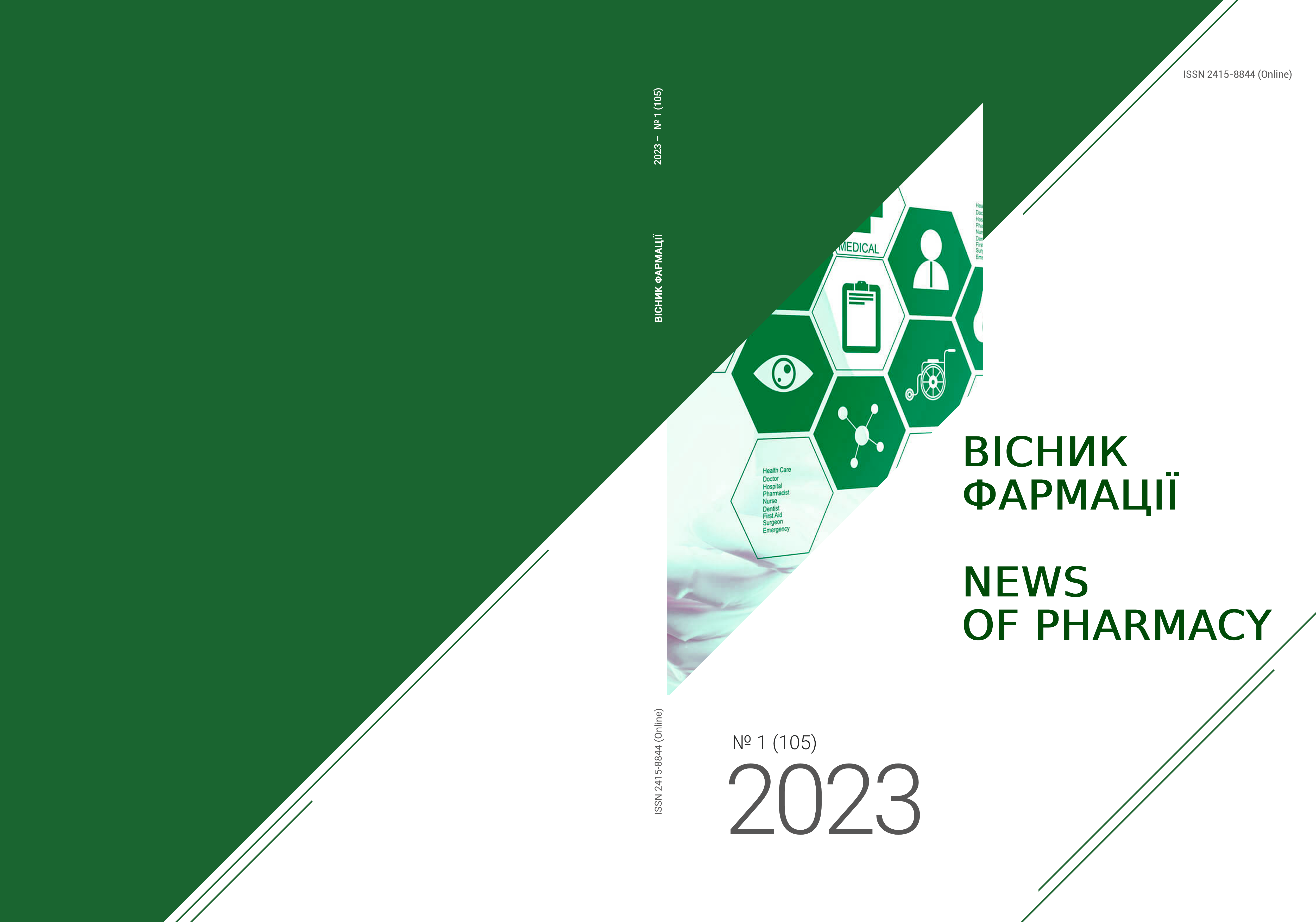Microbiological studies in the development of wound healing ointment
DOI:
https://doi.org/10.24959/nphj.23.108Keywords:
antimicrobial activity; fennel essential oil; biotesting; antioxidant activity; amaranth oilAbstract
Aim. To select the concentration of fennel essential oil as an antimicrobial component and amaranth oil as an antioxidant component in the composition of a wound healing ointment for the wound therapy in the second and third phases of the wound process.
Materials and methods. The study objects were model samples of the ointment with the lipophilic extract of marigold, amaranth oil and fennel essential oil. The antibacterial and antifungal activity of the model samples of the ointment was determined in experiments in vitro by the agar diffusion method. The study of antioxidant properties was performed by biotesting on the biological model of Paramecium caudatum infusoria grown in the Lozin-Lozinsky nutrient medium at a temperature of 20-26 °С. The results were statistically processed using the Excel for Windows software.
Results and discussion. The results of the studies conducted showed the presence of the antimicrobial action of varying degrees for all ointment samples with different concentrations of fennel essential oil. There was a slow increase in the antimicrobial activity of ointments with an increase in the concentration of fennel essential oil. The promising concentrations of fennel essential oil providing the maximum antimicrobial effect in the composition of the wound healing ointment were 1.5 % and 2.0 %. Taking into account a slight difference in the growth retardation zones and the requirements of safety and cost-effectiveness 1.5 % concentration of fennel essential oil was chosen for further research. Exposure of the experimental samples with different concentrations of amaranth oil led to a prolongation of the period of activity of infusoria under the influence of poisons compared to the control, indicating the presence of a high level of antioxidant activity.
Conclusions. Based on the microbiological studies and biotesting, the concentration of antimicrobial and antioxidant components (fennel essential oil – 1.5 %, amaranth oil – 8 %) has been substantiated when developing a wound healing ointment for the therapy in the second and third phases of the wound process.
References
Трембач О. І., Хохленкова Н. В. Теоретичне обґрунтування складу мазі ранозагоювальної дії з діючими компонентами рослинного походження / Вісник фармації. 2022. № 1 (103). С. 48-54. DOI: https://doi.org/10.24959/nphj.22.81.
Державна фармакопея України / ДП «Український науковий фармакопейний центр якості лікарських засобів». 2-е вид. Доп. 5. Харків : ДП «Український науковий фармакопейний центр якості лікарських засобів», 2021. 424 с.
Antimicrobial susceptibility testing. EUCAST disk diffusion method. 2015. Version 5.0 January 2015. 21 p. URL: http://www.infectioncontrol.org.ua/wp-content/uploads/2016/03/7-Manual_v_5.0_EUCAST_Disk_Test.pdf.
Про затвердження методичних вказівок «Визначення чутливості мікроорганізмів до антибактеріальних препаратів» : Наказ МОЗ України від 05.04.2007 р. № 167. URL: https://zakon.rada.gov.ua/rada/show/v0167282-07#Text.
Кордон Т. І. Використання одноклітинних водоростей як індикаторних тест-систем для визначення цитотоксичності. Науковий вісник Ужгородського університету: Серія: Біологія. 2012. Вип. 32. С. 172–175.
Степченко Л. М., Крива О. А., Чумак В. О. Рівень безпечності Гуміліду, визначений біотестуванням на інфузоріях. Theoretical and Applied Veterinary Medicine. 2020. Vol. 7, № 4. С. 210-214. DOI: 10.32819/2019.74037.
Ecotoxicity assessment using ciliate cells in millifluidic droplets / R. Illing et al. Biomicrofluidics. 2016. Vol. 10, № 2. Р. 024115. DOI: 10.1063/1.4944869.
Федоровська М. І., Половко Н. П., Стрілець О. П. Вивчення антиоксидантних властивостей дерматокосметичних засобів з рослинними субстанціями на біологічній моделі Paramecium caudatum. Український біофармацевтичний журнал. 2018. № 2 (55). С. 22-25. DOI: https://doi.org/10.24959/ubphj.18.165.
Downloads
Published
Issue
Section
License
Copyright (c) 2023 National University of Pharmacy

This work is licensed under a Creative Commons Attribution 4.0 International License.
Authors who publish with this journal agree to the following terms:- Authors retain copyright and grant the journal right of first publication with the work simultaneously licensed under a Creative Commons Attribution License that allows others to share the work with an acknowledgement of the work's authorship and initial publication in this journal.
- Authors are able to enter into separate, additional contractual arrangements for the non-exclusive distribution of the journal's published version of the work (e.g., post it to an institutional repository or publish it in a book), with an acknowledgement of its initial publication in this journal.
- Authors are permitted and encouraged to post their work online (e.g., in institutional repositories or on their website) prior to and during the submission process, as it can lead to productive exchanges, as well as earlier and greater citation of published work (See The Effect of Open Access).


